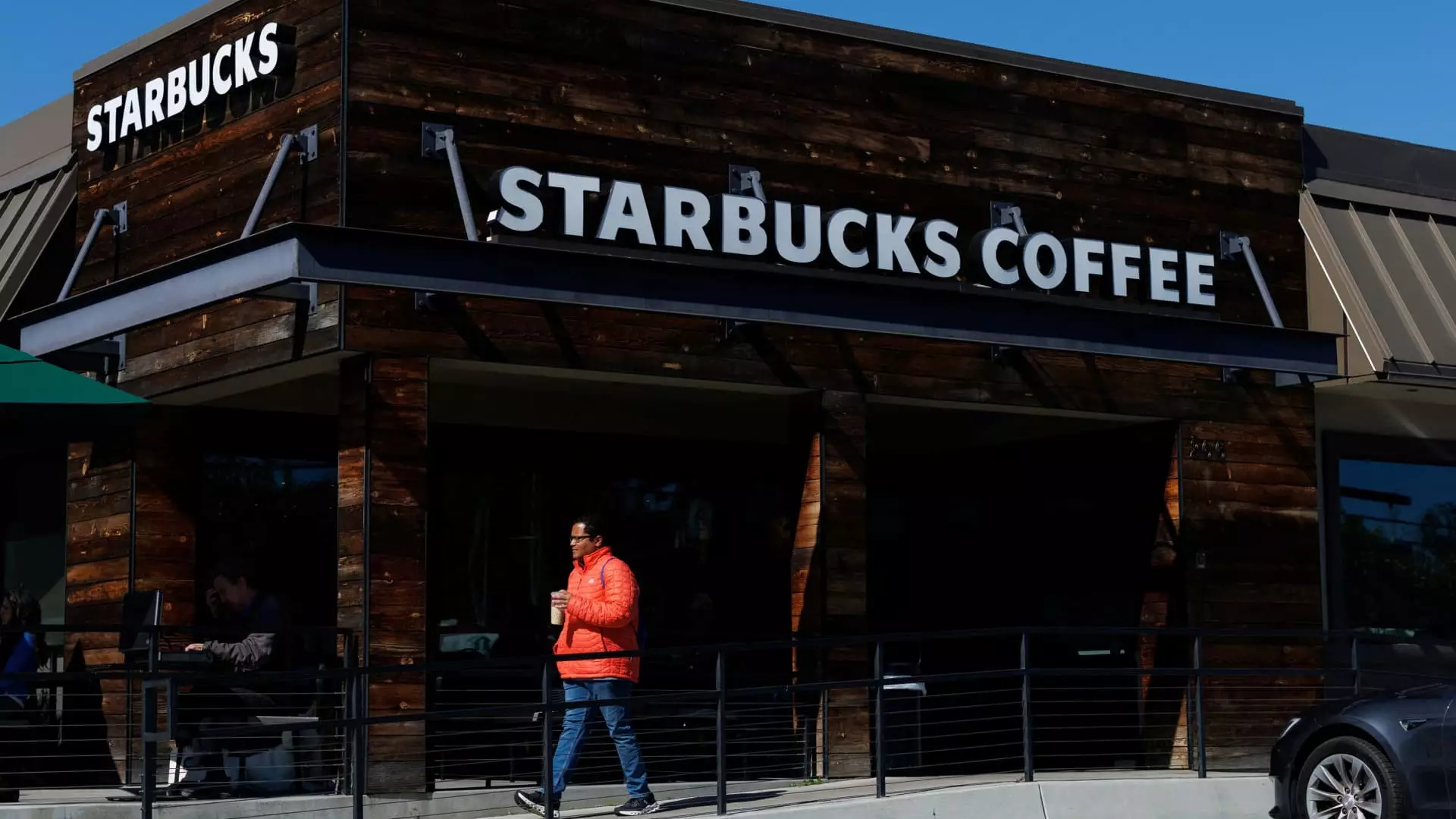Recent movements in restaurant stocks echo a broader malaise affecting the financial landscape, primarily driven by investor fears surrounding an impending recession. The downturn in market confidence can be traced back to President Trump’s announcement of hefty tariffs on imports that sent shockwaves through sectors reliant on international trade. While at first glance it might appear that these tariffs directly impact only a limited subset of restaurant companies, the far-reaching implications on inflation and consumer behavior cannot be overlooked. When economic tremors hit, they tend to rattle the very foundation of consumer spending; after all, when people’s wallets feel lighter, dining out often becomes the first discretionary expense to go.
The reaction of stocks across varying restaurant sectors demonstrates a troubling trend. Notable players like Starbucks and Dine Brands, which owns popular chains like Applebee’s, have suffered significant declines. The eroding consumer confidence not only jeopardizes immediate revenue but also raises critical questions about the sustainability of brands that have long thrived in robust economic conditions.
The Brewing Storm: Inflation and Consumer Behavior
UBS analyst Dennis Geiger’s assertion that the tariff-induced costs for restaurants remain “manageable” is intriguing, yet it dismisses the creeping inflation that some analysts predict will usher in an economic downturn. The reality is stark: higher costs of classic menu staples can lead diners to reconsider their choices, thereby catalyzing shifts in consumer behavior that affect the industry at large. When familiar favorites become pricier, patrons may opt for less costly alternatives—only aggravating the crisis in dining establishments that rely on maintaining high foot traffic.
The food supply chain exemplifies a critical vulnerability within this framework. As the tariff spotlight shines on key coffee-exporting nations like Brazil and Vietnam, the potential for price hikes on coffee products may have even cafes reconsidering their pricing strategies. This is particularly concerning for brands like Starbucks, which already faces challenges in revitalizing its U.S. business model while striving to maintain its global footprint.
Recession Proof or Just Plaid to Fail?
Historically, the fast-food segment has positioned itself as somewhat recession-resistant, often luring customers away from pricier dining options. However, recent patterns paint a complex portrait of the fast-casual dining experience. Major players like McDonald’s and Taco Bell may weather the storm better than others; however, the fundamental shift in consumer habits we witnessed last year—where even lower-income diners opted for fewer visits—demonstrates the fragility inherent in this comfort. It’s important to also remember that wealthier consumers are less likely to change their habits entirely; their penchant for frequent dining can inadvertently alienate essential lower-tier clientele.
Not all is bleak, as some stocks continue to show resilience amidst the chaos. Dutch Bros., emerging as a vigorous challenger to Starbucks, exhibited slight gains during this tumultuous trading session. But these victories feel more like rare bright spots in an otherwise turbulent landscape, suggesting a pervasive hesitation still looms over the industry.
The Bigger Picture: A Call for Adaptation
This downturn should serve as a wake-up call for the restaurant industry. The numbers tell a bleak story, begging the question of how adaptable these brands truly are. Enhanced agility in response to economic fluctuations is essential, whether that means revisiting supply chains or embracing innovative dining experiences. The trajectory is clear: without shoring up operational flexibility and anticipating shifts in consumer spending, many established franchises could find themselves locked in a downward spiral.
What remains of utmost importance as we navigate this uncertainty is the need for brand transparency and consumer connection. Slow food lovers and casual diners alike crave authenticity and community in their dining experiences, particularly during challenging times. Brands that understand and respond to their clientele’s evolving preferences stand a far better chance at not only surviving but thriving.
In this era of escalating tariffs and economic ambiguity, the restaurant industry faces a crossroad. The impending recession may be a catalyst for change, but if management teams embrace evolution over stagnation, it could very well become a pivot point toward renewed resilience. The question remains: are they willing to rise to the challenge?



Leave a Reply